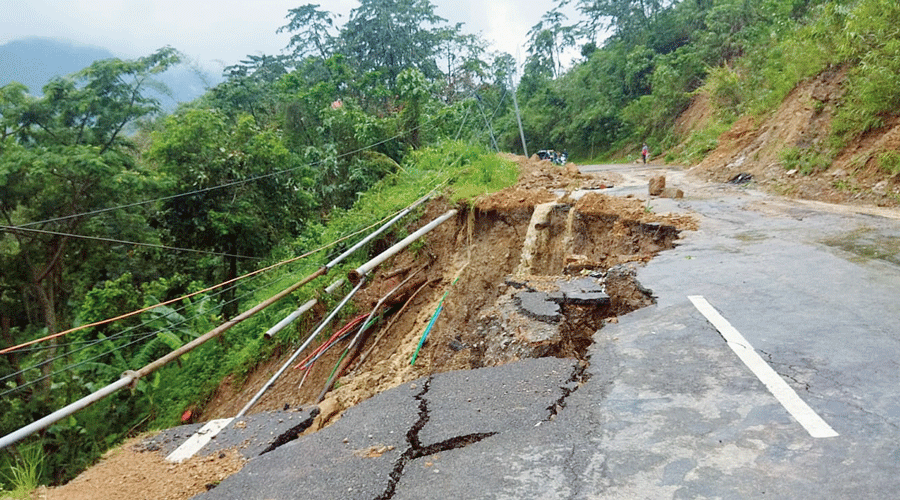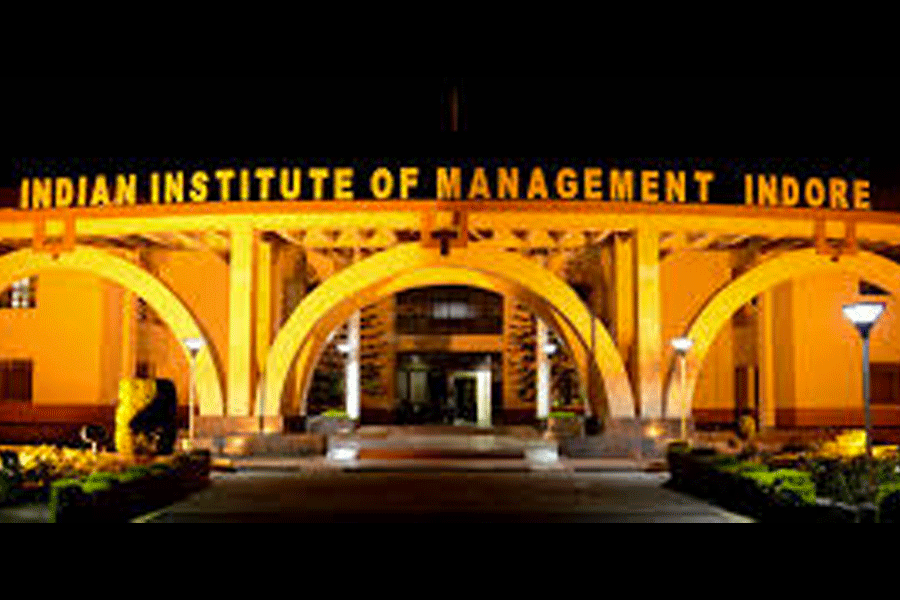The widespread destruction and disruption caused by flood and landslides in Assam’s Dima Hasao district have turned the spotlight on the creation of development projects at the “cost” of the ecology in the ecologically fragile hill district.
As an inter-ministerial central team (IMCT) visited the district on Saturday to assess the destruction caused by unprecedented rainfall, Gauhati University faculty Uttam Bathari and independent researcher on the Brahmaputra Mirza Zulfiqur Rahman, earnestly hoped the authorities will not only confine themselves to rebuilding damaged infrastructure and rehabilitation but also recommend specific and sustained steps to restore the ecology to prevent a repeat.
They hoped for “proper reassessment” of infrastructure projects in the hill district, so that they could be addressed before the next disaster strikes.
The district recorded its highest-ever rainfall – 451mm – on May 14 compared to maximum 200 mm it normally receives, snapping rail connectivity to Manipur, Tripura, Mizoram and South Assam through the hill section in Dima Hasao.
Road transport too remains disrupted, forcing authorities to seek help of the IAF to drop essentials in inaccessible areas.
The rain-induced landslide and flood has also destroyed 2086 houses and 13 schools besides affecting and 2403.42 hectare of agricultural land, the district administration apprised the Central team on Saturday.
Crops and vegetables have been damaged either by landslides, submergence or siltation. Electricity networks in three sub-division remain severely affected.
Three lives were lost while 1407 individuals have been rendered homeless. The administration has requested for immediate financial assistance for recovery of livelihood and rebuilding infrastructure.
According to Bathari, who hails from Dima Hasao, mega projects such as the 210-km rail gauge conversion and the East West Corridor national highway to improve connectivity led to “massive” deforestation and destruction of the river ecosystems in Dima Hasao.
Rampant unregulated sand and stone mining in the district also disrupted the natural flow of rivers.
“Thousands of trees were felled for the mega projects resulting in massive earth cutting. In most cases, whole hillocks were flattened or dug open in halves for making passages. This generated massive amounts of muck and landfills that were disposed off haphazardly without taking due care of adverse effects it would create. For instance in some cases springs and streams were covered by such landfills leading to weakening of soil structure,” Bathari said.
An audit report in 2010 on the railway extension work in Dima Hasao clearly mentioned faulty designs and planning, he said. The broad gauge line passes through 79 major bridges, 340 minor bridges and 21 tunnels in the hill section
“Dima Hasao is a man-made disaster. I hope the authorities fix responsibility for the construction of the railway and highway projects without proper planning, alignment and care for the local ecology. There was no effective afforestation drive,” Bathari said.
In fact, afforestation drives must be made mandatory in any future projects and a part of the project money be withheld unless afforestation is carried out and maintained for at least 10 years, he said.
“Development at the cost of ecology should be stopped. We have to rebuild keeping an eye on the future,” Bathari said, articulating concerns of those affected.
Such has been the extent of devastation in Dima Hasao that chief minister Himanta Biswa Sarma said after a stock-taking visit that infrastructure created in the past five to ten years in Dima Hasao has been damaged.
In a letter to the chief minister, former Haflong MLA Samarjit Haflongbar has called for a halt to destruction of forests, illegal mining of coal and extraction of stones from the rivers using heavy excavators.
Rahman said the infrastructure was created without taking into account the natural ecological connectivity in the area, adding there “is no visible evidence” of afforestation projects, which needs to be planned well and aggressively pursued.
Like Bathari, Rahman also laid stress on community consultation while creating infrastructure.
“Bring traditional knowledge systems into the planning process, involve social science researchers in the planning process more meaningfully, and not only keep it to engineers. If economic infrastructure and connectivity have to be sustainable and bring benefits to the local people, then it must be tied into a process of consultation, communication and ensure ecological connectivity.”
Rahman hoped other ecologically fragile northeastern states would take note of the disaster in Assam, which has so far lost 30 lives in floods and landslides, while pushing their development agenda.
“The mess we have created on the ground in combination with climate change events is manifesting in such catastrophic events... Today it is Dima Hasao, later in the year, maybe another site in Northeast India. We have to address the ecological ruptures in a scientific and sustainable manner, keeping in mind traditional knowledge of communities inhabiting Northeast India, and then only we can achieve any sense of progress,” Rahman said.











